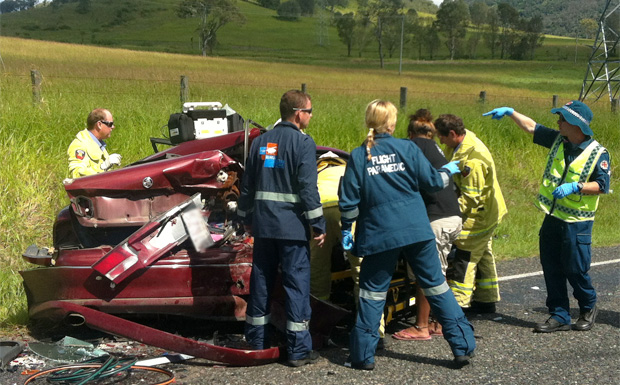
October 8, 2018
Did you know that two-thirds of all Australian road deaths occur on regional roads? This is despite the fact that rural residents make up just 16.5 per cent of the total population.
This horrifying statistic has prompted the Australian Road Safety Foundation (ARSF) to launch a new initiative, Rural Road Safety Week, to put a spotlight on rural crashes.
The ARSF commissioned research which shows that both regional and metro drivers change their driving behaviour when on rural roads.
According to the data, one-in-three drivers are more likely to break a road rule when driving on rural roads, compared with city or suburban streets.
ARSF CEO Russell White urged both regional and city-based drivers to take responsibility to reduce the rural road toll.
“While there are a number of factors that contribute to the regional road toll, it’s everyday Australians that hold the key to safer roads” Mr White said.
“The research has told us that the main reason drivers are taking more risks on rural roads is because they’re less likely to get caught.
“We will continue to see this significant and unnecessary loss of life on regional roads, until we make the effort to shift this mentality so that we’re driving with safety front of mind.”
The survey found regional drivers were more likely to engage in dangerous behaviour such as driving under the influence of drugs, driving fatigued, not wearing a seatbelt and speeding.
Member for Wide Bay – and former police office – Llew O’Brien is co-chair of the Parliamentary Friends of Road Safety and Queensland chair of the Black Spot Road Program Committee.
“This week is the inaugural Rural Road Safety Week, which reminds us to take extra care on the road, not just for this week, but every time we get behind the wheel,” Mr O’Brien said.
“We must always be alert to the responsibility we have to ourselves, our passengers, and all other road users whenever and wherever we drive.
“I congratulate the Australian Road Safety Foundation for bringing forward this important road safety initiative which is designed to save lives and avoid injury and trauma on the road.”
* * *
Regional Road Safety Fact Sheet
- 2 in 5 drivers believe a change in driver attitudes and behaviours would have the biggest impact on the regional road toll
- One-third of Australian drivers admit they are more likely to break a road rule on regional roads
- Almost half (48 per cent) of drivers who admit they are more likely to break road rule on regional roads would do so because they are less likely to be caught by police
- Drivers are 1.8 times more likely to speed on regional roads than they are city or suburban streets
- Australians are twice as likely to overtake on a double line if driving on a regional road, compared with city or suburban streets
Metro v Regional Drivers
- Regional drivers are more likely than metro residents to drive under the influence of drugs or alcohol, fatigued, not wear a seatbelt and speed
- The only major risk where regional drivers proved safer than their metro counterparts was distraction, such as the use of mobile phones
- Metro drivers admitted they were more likely to break a road rule on regional roads, compared with a local driver
- However, more metro drivers cited fewer dangers and were more likely to break a road rule accidentally because of fatigue, whereas rural drivers were more likely to do so because they were less likely to be caught
- Driving under the influence and speeding were the top two biggest difference between regional and metro drivers:
- 20 per cent of regional drivers have driven under the influence of drugs or alcohol, compared with 16 per cent of metro drivers
- 61 per cent of regional drivers admit to speeding, compared with 54 per cent of metro drivers
The ARSF research was conducted by a third-party research company, Pure Profile, and was an online survey of more than 1000 licenced Australians, nationally representative by gender, age and location.
- When it came to why regional roads make up such a high portion of the road toll, the biggest difference between attitudes was that rural drivers believed fatigue played the a major factor, whereas metro drivers believed higher speed limits were to blame
- The majority of regional drivers believed drivers attitudes and behaviours would make the biggest difference to the road toll, whereas metro drivers improved infrastructure would make the biggest impact























